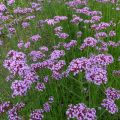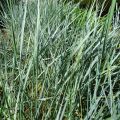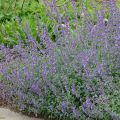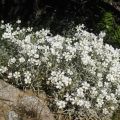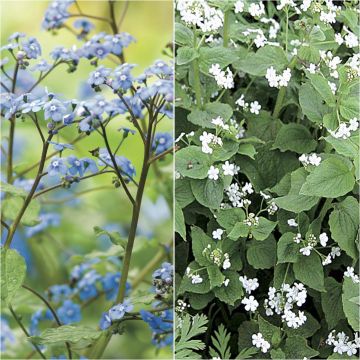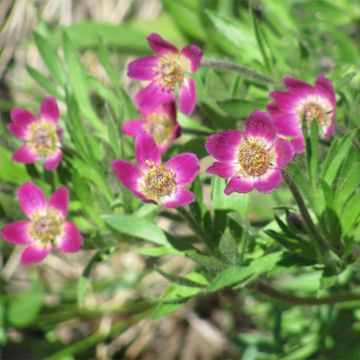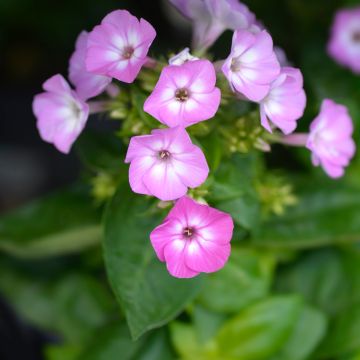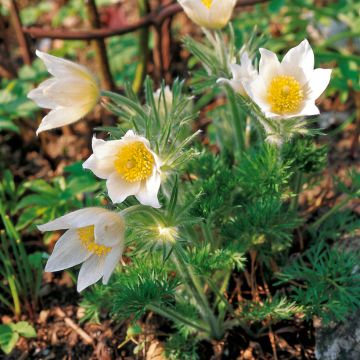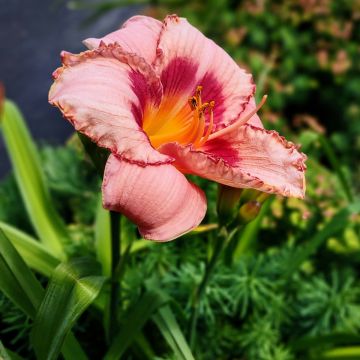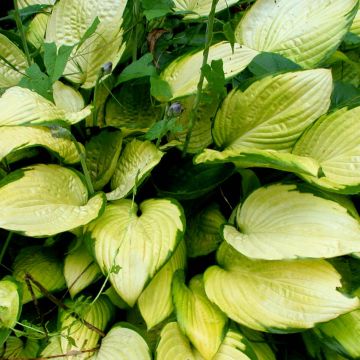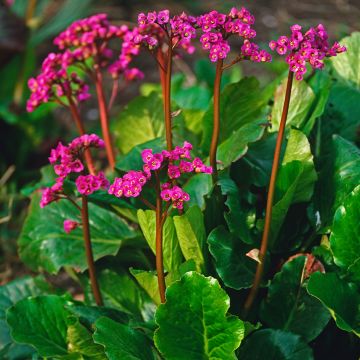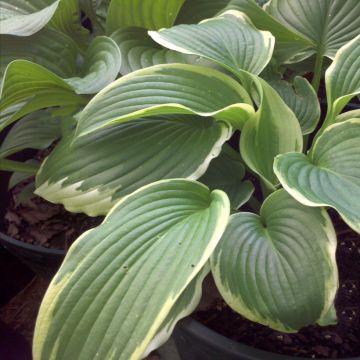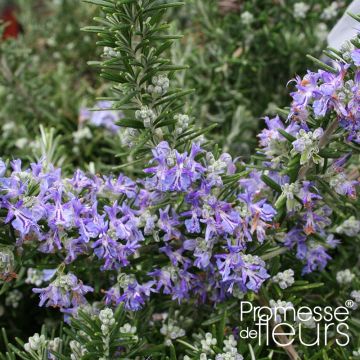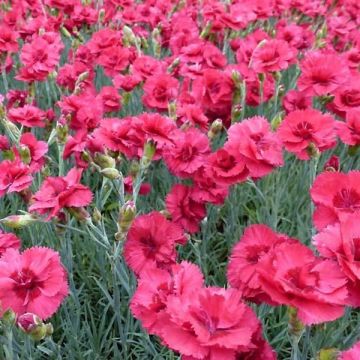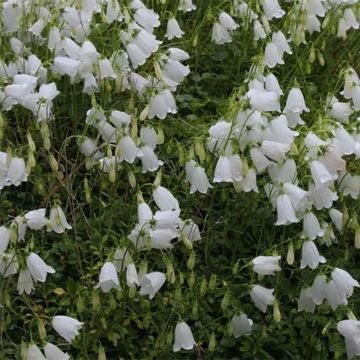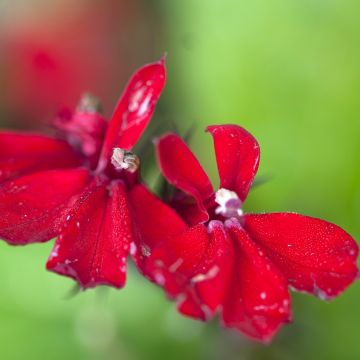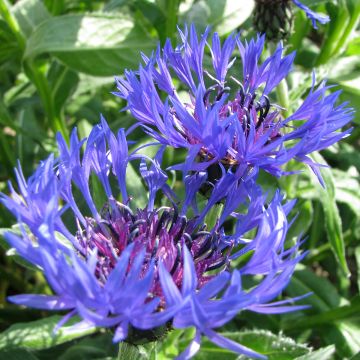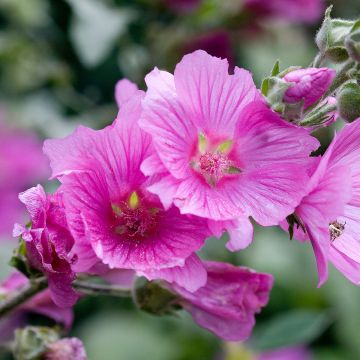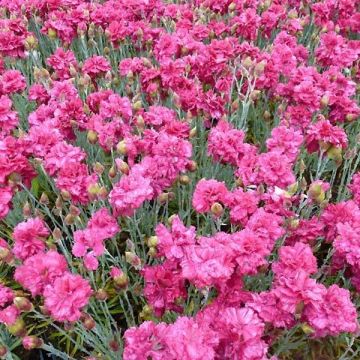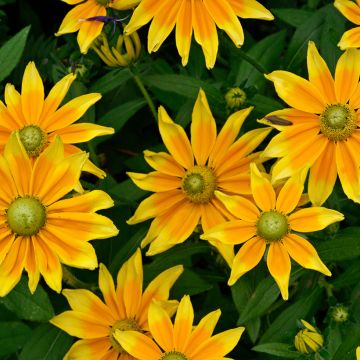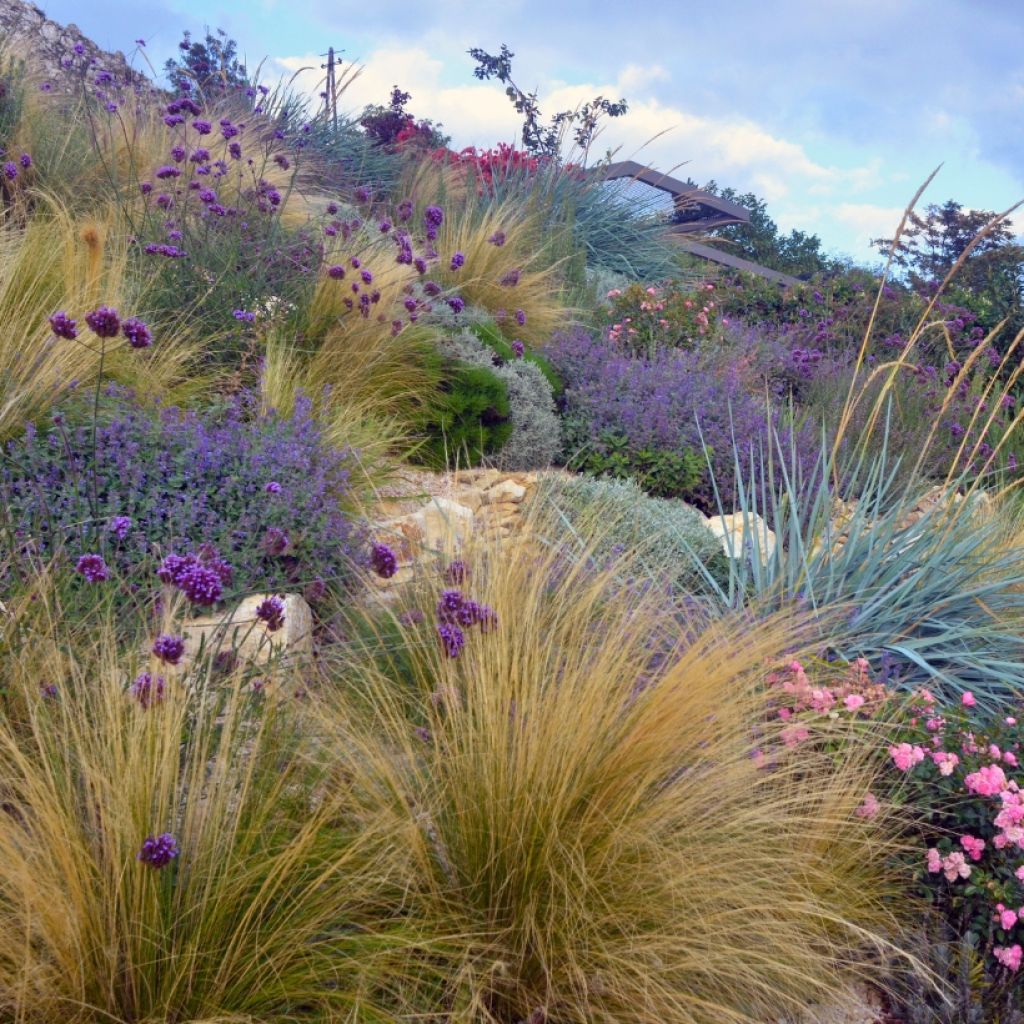

Wild bed for dry soil and slopes
Wild bed for dry soil and slopes
Verbena, Stipa, Elymus, Nepeta, Cerastium
This plant carries a 12 months recovery warranty
More information
We guarantee the quality of our plants for a full growing cycle, and will replace at our expense any plant that fails to recover under normal climatic and planting conditions.
From €5.90 for pickup delivery and €6.90 for home delivery
Express home delivery from €8.90.
Does this plant fit my garden?
Set up your Plantfit profile →
Collection items (10 plants)
Description
The Wild Bed for Dry Soil and Slopes is composed of 10 drought-resistant, perennial ornamental plants, perfect for planting a dry slope. Verbena bonariensis stands out with its fine rigid stems topped with small violet flowers that attract butterflies. Stipa tenuifolia, with its "angel hair", offers graceful movement at the slightest breeze, while the Nepeta grandiflora 'Summer Magic' adds a bluish note with its spike flowers. The collection covers an area of 2 to 3 m² within 3 years.
The collection consists of 10 plants:
3 Verbena bonariensis: Verbena bonariensis can reach a height of 1.20 m, its fine stems bear inflorescences of tiny flowers in a purple mauve shade. Flowering from June to October, it attracts pollinating insects. More biennial than perennial, it perishes below -15°C.
3 Stipa tenuifolia: Also known as "Angel Hair", this 40 to 50 cm grass forms light tufts that dance in the wind. It is architectural, producing silky golden spikes from summer onwards.
1 Elymus magellanicus: This 50 cm tall grass is distinguished by its evergreen grey-blue, almost metallic foliage. It brings a unique texture and contrasts beautifully with the other plants.
2 Nepeta grandiflora 'Summer Magic': This vigorous cultivar offers a long flowering period, from June to September. Its lavender blue flower spikes bloom on sturdy 60 cm tall stems. Dark green, aromatic foliage.
1 Cerastium tomentosum 'Yo Yo': A creeping perennial, this 15 cm tall silver carpet is covered with small white flowers in spring. Its silvery grey foliage, persistent in winter, is perfect for covering the ground between other plants.
These plants can be planted in spring or autumn, in sunny flowerbeds or on slopes, in any well-drained soil, even very dry. Allow a spacing of 40 cm between each plant for each to develop well. Place the Verbenas in the background, followed by the Nepetas and Elymus in the centre, and finish with the Stipas at the front to enjoy their moving foliage. Plant the low, creeping Cerastium at the edge to bring a neat aspect to the bed.
To enhance your wild bed, add three plants of Achillea 'Lilac Beauty' for their mauve pink inflorescences. Add three lavenders 'Phenomenal' for a Mediterranean touch, distributed at the front of the bed. Two plants of Gaura 'Crimson Butterfly' will produce pink flowers continuously throughout the summer. This set will cover an area of approximately 5 to 6 m², mixing varied textures and colours throughout the season.
Report an error about the product description
Flowering
Foliage
Plant habit
Botanical data
Verbena, Stipa, Elymus, Nepeta, Cerastium
Verbenaceae, Poaceae, Lamiaceae, Caryophyllaceae
Other Perennials A to Z
Planting and care
Plant these young plants in the sun, in well-draining soil, even limestone. Water at the beginning to help the plants establish well. Once well rooted, they can do without watering in summer in most regions.
Planting period
Intended location
Care
This item has not been reviewed yet - be the first to leave a review about it.
Summer flowering perennials
Haven't found what you were looking for?
Hardiness is the lowest winter temperature a plant can endure without suffering serious damage or even dying. However, hardiness is affected by location (a sheltered area, such as a patio), protection (winter cover) and soil type (hardiness is improved by well-drained soil).

Photo Sharing Terms & Conditions
In order to encourage gardeners to interact and share their experiences, Promesse de fleurs offers various media enabling content to be uploaded onto its Site - in particular via the ‘Photo sharing’ module.
The User agrees to refrain from:
- Posting any content that is illegal, prejudicial, insulting, racist, inciteful to hatred, revisionist, contrary to public decency, that infringes on privacy or on the privacy rights of third parties, in particular the publicity rights of persons and goods, intellectual property rights, or the right to privacy.
- Submitting content on behalf of a third party;
- Impersonate the identity of a third party and/or publish any personal information about a third party;
In general, the User undertakes to refrain from any unethical behaviour.
All Content (in particular text, comments, files, images, photos, videos, creative works, etc.), which may be subject to property or intellectual property rights, image or other private rights, shall remain the property of the User, subject to the limited rights granted by the terms of the licence granted by Promesse de fleurs as stated below. Users are at liberty to publish or not to publish such Content on the Site, notably via the ‘Photo Sharing’ facility, and accept that this Content shall be made public and freely accessible, notably on the Internet.
Users further acknowledge, undertake to have ,and guarantee that they hold all necessary rights and permissions to publish such material on the Site, in particular with regard to the legislation in force pertaining to any privacy, property, intellectual property, image, or contractual rights, or rights of any other nature. By publishing such Content on the Site, Users acknowledge accepting full liability as publishers of the Content within the meaning of the law, and grant Promesse de fleurs, free of charge, an inclusive, worldwide licence for the said Content for the entire duration of its publication, including all reproduction, representation, up/downloading, displaying, performing, transmission, and storage rights.
Users also grant permission for their name to be linked to the Content and accept that this link may not always be made available.
By engaging in posting material, Users consent to their Content becoming automatically accessible on the Internet, in particular on other sites and/or blogs and/or web pages of the Promesse de fleurs site, including in particular social pages and the Promesse de fleurs catalogue.
Users may secure the removal of entrusted content free of charge by issuing a simple request via our contact form.
The flowering period indicated on our website applies to countries and regions located in USDA zone 8 (France, the United Kingdom, Ireland, the Netherlands, etc.)
It will vary according to where you live:
- In zones 9 to 10 (Italy, Spain, Greece, etc.), flowering will occur about 2 to 4 weeks earlier.
- In zones 6 to 7 (Germany, Poland, Slovenia, and lower mountainous regions), flowering will be delayed by 2 to 3 weeks.
- In zone 5 (Central Europe, Scandinavia), blooming will be delayed by 3 to 5 weeks.
In temperate climates, pruning of spring-flowering shrubs (forsythia, spireas, etc.) should be done just after flowering.
Pruning of summer-flowering shrubs (Indian Lilac, Perovskia, etc.) can be done in winter or spring.
In cold regions as well as with frost-sensitive plants, avoid pruning too early when severe frosts may still occur.
The planting period indicated on our website applies to countries and regions located in USDA zone 8 (France, United Kingdom, Ireland, Netherlands).
It will vary according to where you live:
- In Mediterranean zones (Marseille, Madrid, Milan, etc.), autumn and winter are the best planting periods.
- In continental zones (Strasbourg, Munich, Vienna, etc.), delay planting by 2 to 3 weeks in spring and bring it forward by 2 to 4 weeks in autumn.
- In mountainous regions (the Alps, Pyrenees, Carpathians, etc.), it is best to plant in late spring (May-June) or late summer (August-September).
The harvesting period indicated on our website applies to countries and regions in USDA zone 8 (France, England, Ireland, the Netherlands).
In colder areas (Scandinavia, Poland, Austria...) fruit and vegetable harvests are likely to be delayed by 3-4 weeks.
In warmer areas (Italy, Spain, Greece, etc.), harvesting will probably take place earlier, depending on weather conditions.
The sowing periods indicated on our website apply to countries and regions within USDA Zone 8 (France, UK, Ireland, Netherlands).
In colder areas (Scandinavia, Poland, Austria...), delay any outdoor sowing by 3-4 weeks, or sow under glass.
In warmer climes (Italy, Spain, Greece, etc.), bring outdoor sowing forward by a few weeks.

































